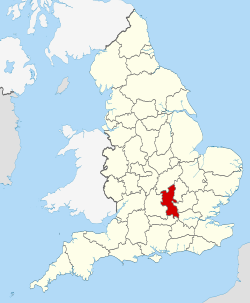
There are approximately 372,905 listed buildings in England and 2.5% of these are Grade I. [1] This page is a list of these buildings in the county of Buckinghamshire, [2] [3] by district.

There are approximately 372,905 listed buildings in England and 2.5% of these are Grade I. [1] This page is a list of these buildings in the county of Buckinghamshire, [2] [3] by district.
As of 2025 [update] , there are thirty Grade I listed buildings and structures in the City of Milton Keynes.
![]() Media related to Grade I listed buildings in Buckinghamshire at Wikimedia Commons
Media related to Grade I listed buildings in Buckinghamshire at Wikimedia Commons